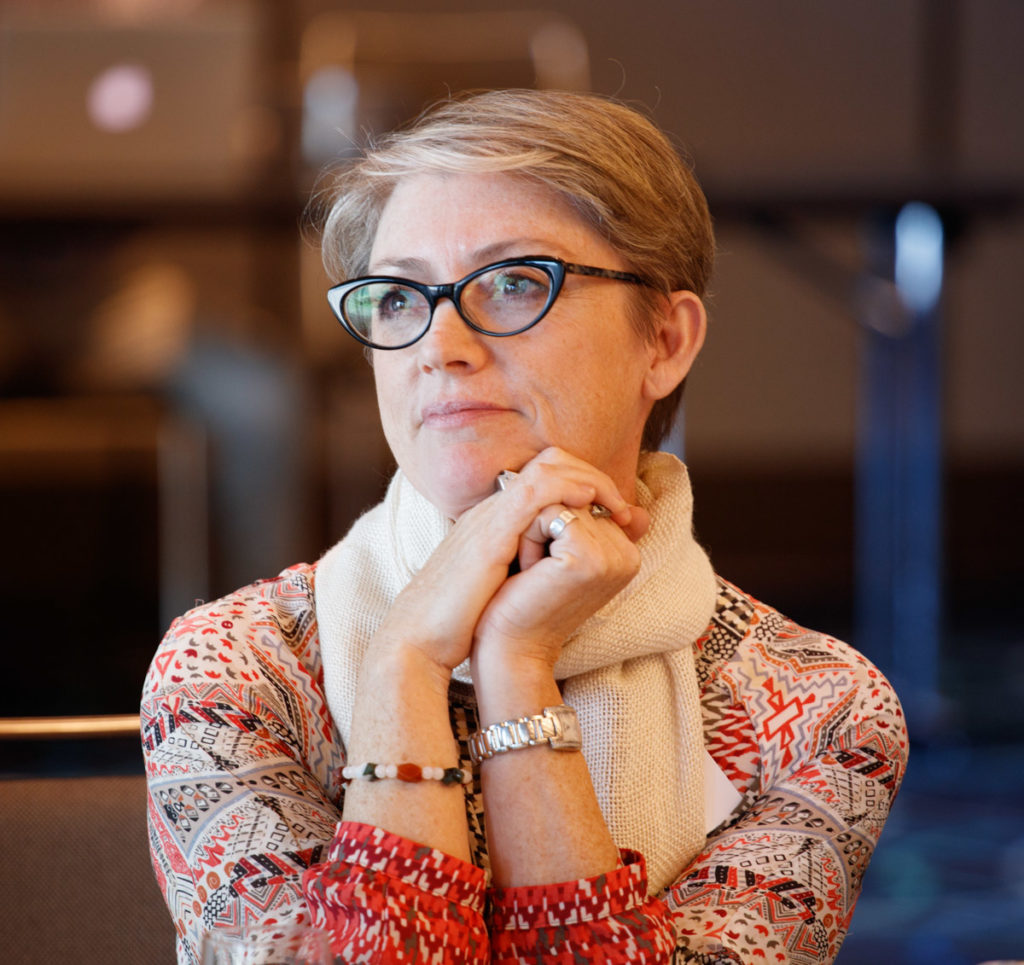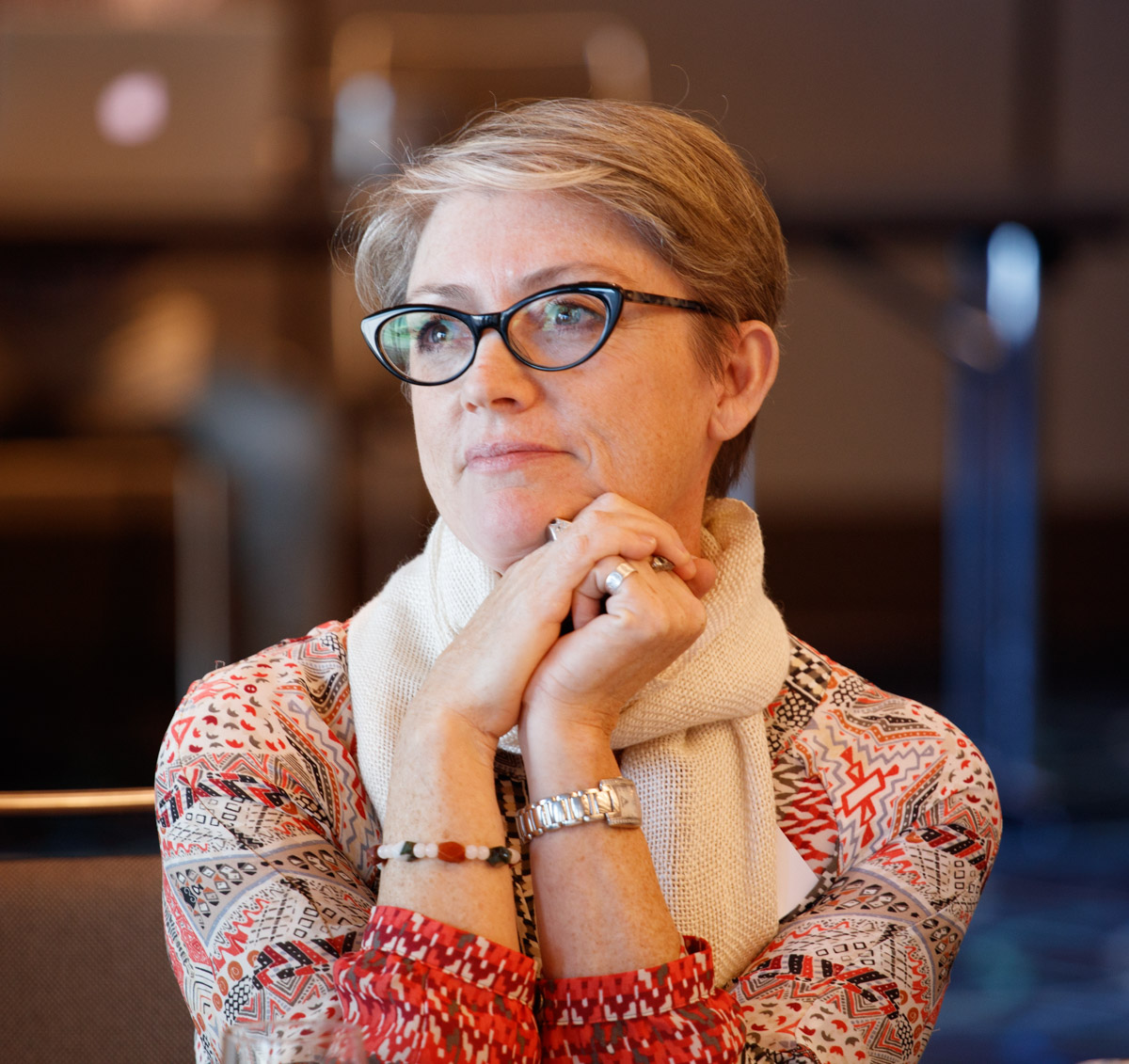By Kathleen Holland

Around the globe, women entrepreneurs face a unique set of challenges as they build their businesses. They not only encounter the universal challenges of starting a business, but also must contend with deeply rooted cultural constraints and biases. Recognizing these obstacles, Vital Voices and Bank of America have partnered to create the Global Ambassadors Program, which advances women’s economic empowerment through mentoring and skills-building.
Based on my own expertise and interest in providing business strategies to women entrepreneurs, I became involved with the Global Ambassadors Program as a trainer — I coached women entrepreneurs from around the world in performance management, brand development and strategic planning. At the 2014 Global Ambassadors Program in Northern Ireland, my role shifted to Global Ambassador when I was matched with mentee Gaella Alexandra Gottwald, who serves as the director of the Croatian Association of Artists. During this partnership, I provided strategic guidance and purpose-driven structure to help Gottwald develop her business ideas, while Gottwald stretched my own understanding of how arts and culture can be used to identify creative solutions to complex societal issues.
Through my mentorship and training experience with the Global Ambassadors Program, I’ve identified six business planning tips to help women strategically grow their ideas into purpose-driven businesses.
- You can’t manage what you don’t measure
In order to develop strategies for business planning, you first should know where you are and where you are going. This can only happen through the creation and analysis of key performance indicators (KPIs). Through quantitative objectivity, successful business strategies will emerge. For example, you can look at various organizational departments and identify appropriate performance indicators for each. In human resources, an effective engagement survey can provide important benchmark data to evaluate annually. Consider the triple bottom line (people, planet, profit) and, the KPIs which drive them in your organization.
- Be smart about time management
To manage time effectively, you as a leader should know your organizational priorities. Based on these priorities, time can be allocated to address them while maximizing the mission. One practical way to accomplish this is to monitor where you are currently spending your time. Often leaders spread their time too thinly and/or in areas that are not strategic. Based on this data, leaders can redistribute their time to address the most pressing points of constraint within their organization.
- Culture can be your competitive advantage
If you are willing to spend time building a great organizational culture aligned to your purpose-driven mission and vision, then your culture has the potential to become a competitive advantage. Organizational culture comes to life when the values of a business are reflected in every aspect of the company. One practical way to strategically build organizational culture is to perform 360° employee reviews and engagement surveys in order to quantitatively analyze how well the company is living out its values.
- A brand is not a logo
A brand is far more than just a logo. A brand starts with a promise, which is symbolized as an identity and delivered by experiences. Specifically, the brand promise is a value proposition and must be competitive, compelling and credible. The brand identity flows from the promise as its visual and tonal representation. The brand experience is delivered through every single interaction stakeholders have with the organization. A strong brand develops when all three brand components are carefully designed and executed.
- Be a hedgehog, not a fox
In Good to Great: Why Some Companies Make the Leap…and Others Don’t, Jim Collins tells the story of a fox who becomes exhausted by running around wildly chasing ideas while his hedgehog counterpart simply hunkers down by leaning into a single idea. In this story, great companies act like the hedgehog — they are not distracted by every idea, but are able to keenly focus on a clear path toward success. In order to build a purpose-driven business, you should focus your ideas into a streamlined mission.
- Planning for growth is like a GPS
To navigate business planning, you should know your starting point and ending point in order to generate the best path to reach your goal. A clear map with a defined start and end point is necessary for strategic growth and purposeful planning. While there may be detours along the way, you can adjust for road blocks by remaining flexible. Business flexibility is created by staying connected to your people and your market.
Tips and strategies like these have enabled Gottwald, and many of her fellow mentees from the Global Ambassadors Program, to advance the economic landscape by developing purpose-driven businesses. In fact, 67 percent of mentees who have participated in the Global Ambassadors Program report an increase in sales and revenue growth; and 75 percent report an increase in the number of new employees hired.
Thanks to resources such as the Global Ambassadors Program, women are poised to make significant contributions not only to their families and communities, but also to their countries and the global economy.
Originating from Canada, Kathleen Holland is a founding partner of KMH Associates, a global strategic consulting firm. She currently serves as the executive director for Trade+Impact Association, a collaborative global community of members from the craft and natural cosmetics sectors, with a focus on advancing women-led social enterprises in Africa and the Middle East. Today, Holland continues to advise women entrepreneurs through her work with the Global Ambassadors Program as a trainer.






Add Comment